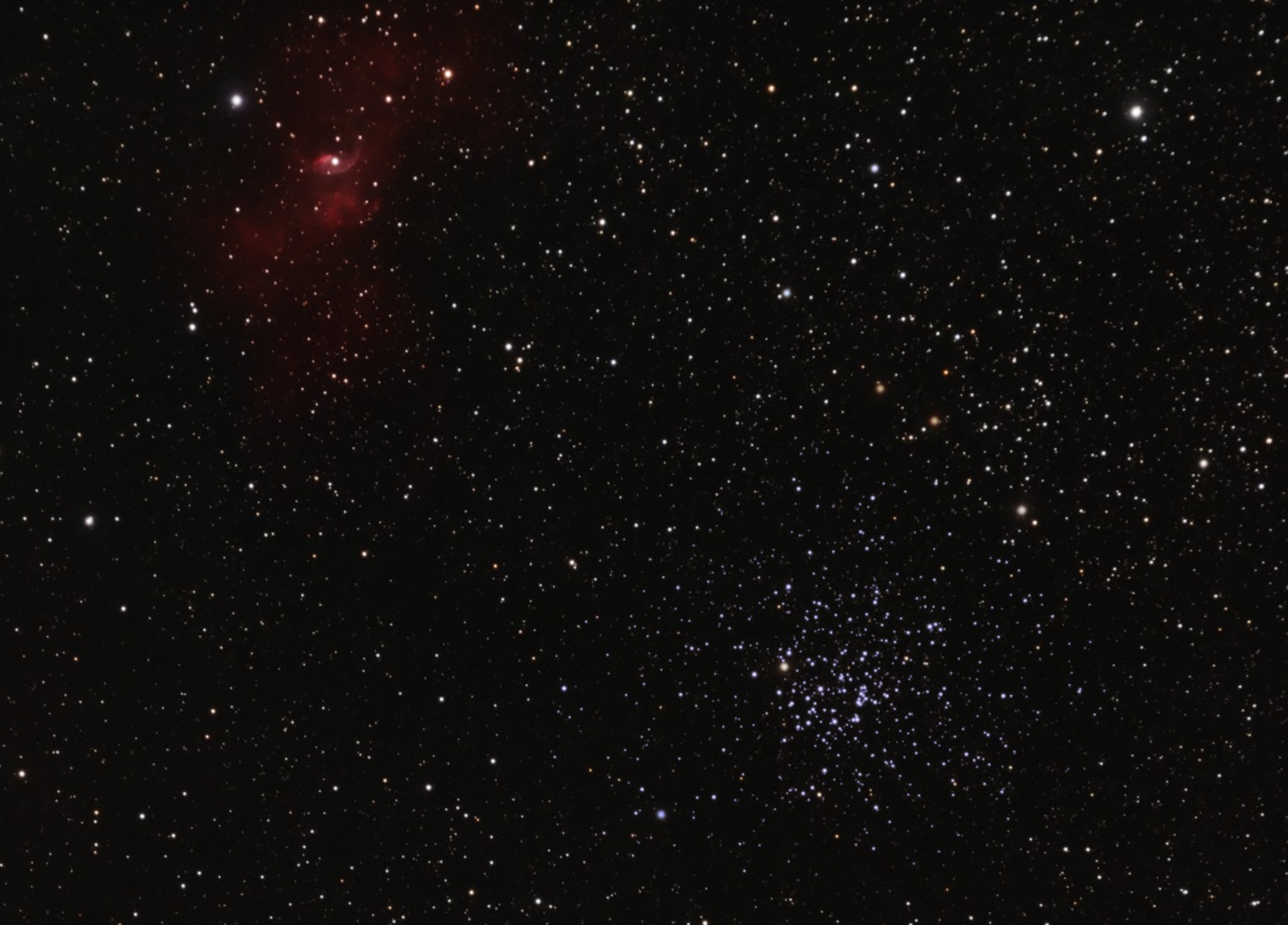
This is a rare spot in the sky where you get two different objects for the price of one! A star cluster and nebula can be observed in the same field of view. The rich cluster in the lower right region of this image is known as M52, and was discovered by Charles Messier in 1774. The star cluster has over 190 probable members. The distance to M52 is not well known, and estimates range from a distance of about 3,900 light-years to about 5,000 light-years away. M52 has a diameter of about 15 to 19 light-years. The brightest member of the star cluster is a magnitude 8.2 yellow G-type giant, while most of the stars are blue-white B3 main sequence stars. M52 has an estimated age of 35 million years to about 50 million years old. This is a relatively young star cluster. The Bubble Nebula (NGC7635) appears in the upper left hand portion of this image. The Bubble Nebula appears around the energetic OB type star HD 220057, whose stellar winds have blown away gas near the star and formed a bubble of ionized glowing gas. The star HD 220057 is a hot massive giant 40 times more massive than our Sun. If you ever have a chance to visit HD 220057 in a spaceship, you had better pack lots of sunscreen.
This is an RGB CCD image taken with a Takahashi FCT-150 refractor at prime focus using an STL-11000M CCD. The image was taken from my backyard in Scottsdale, Arizona.
M52 (NGC 7654)
Constellation: Cassiopeia
RA: 23h 24m 50s Dec: +61d 36' 23" (J2000)
NGC 7635 (the Bubble Nebula)
Constellation: Cassiopeia
RA: 23h 20m 45s Dec: +61d 12' 42" (J2000)
January 18, 2009
Image by Sid Leach
Scottsdale, Arizona
Recent Images.
Complete list of images.
Description of equipment used to acquire images.
Home
Feedback and comments should go to Sid